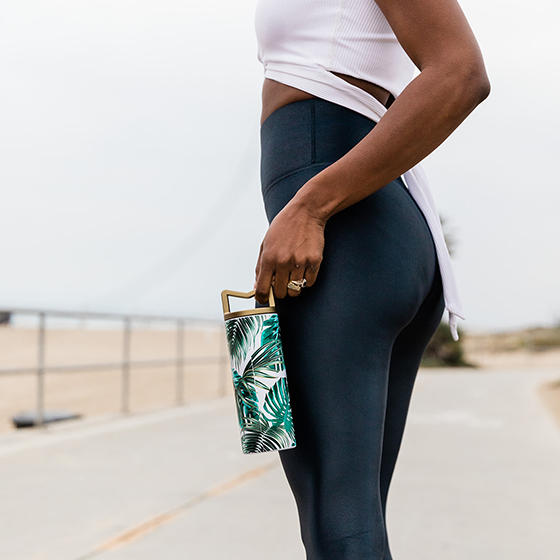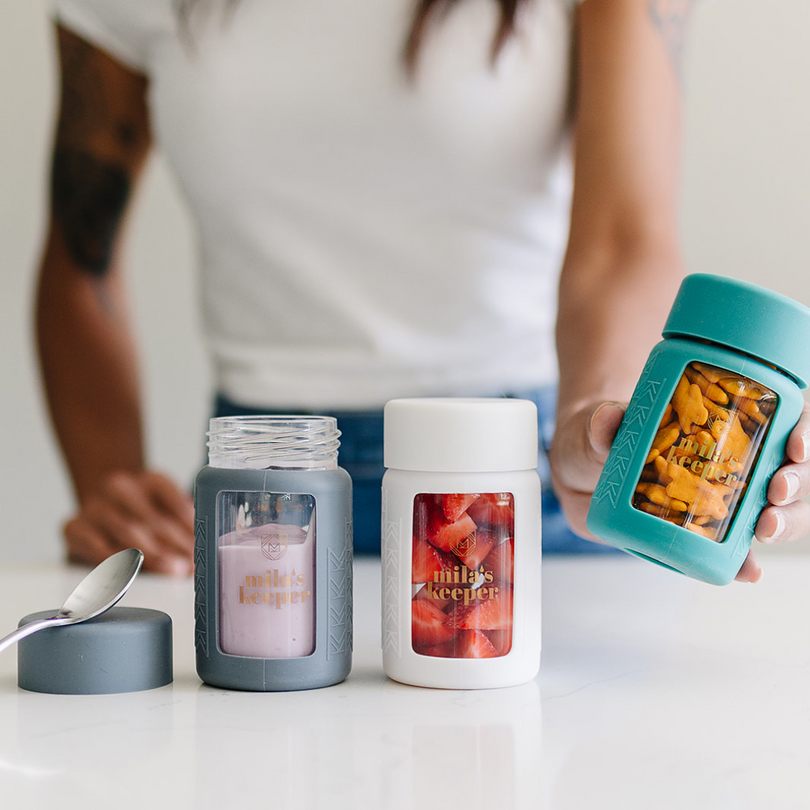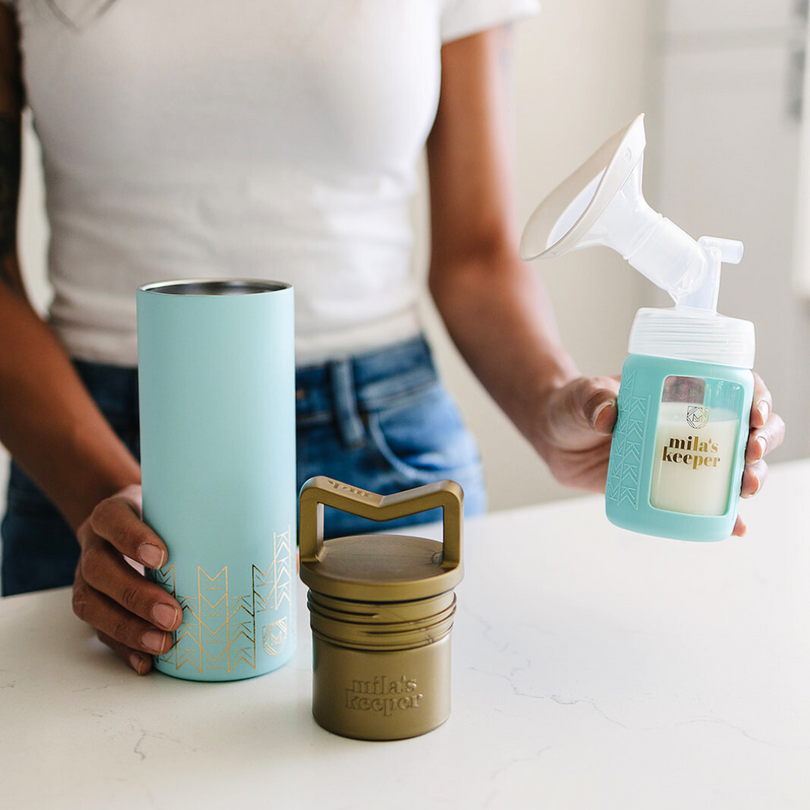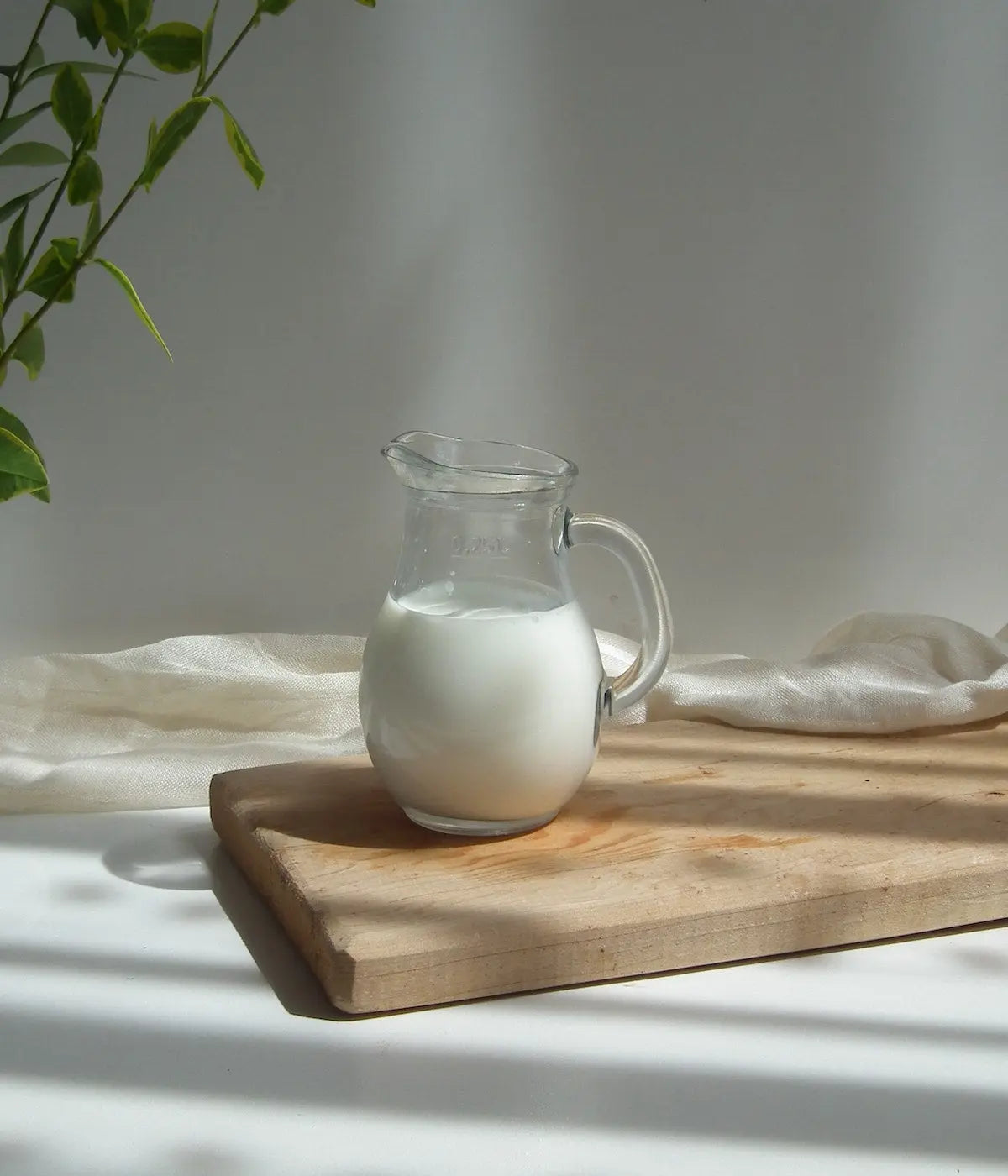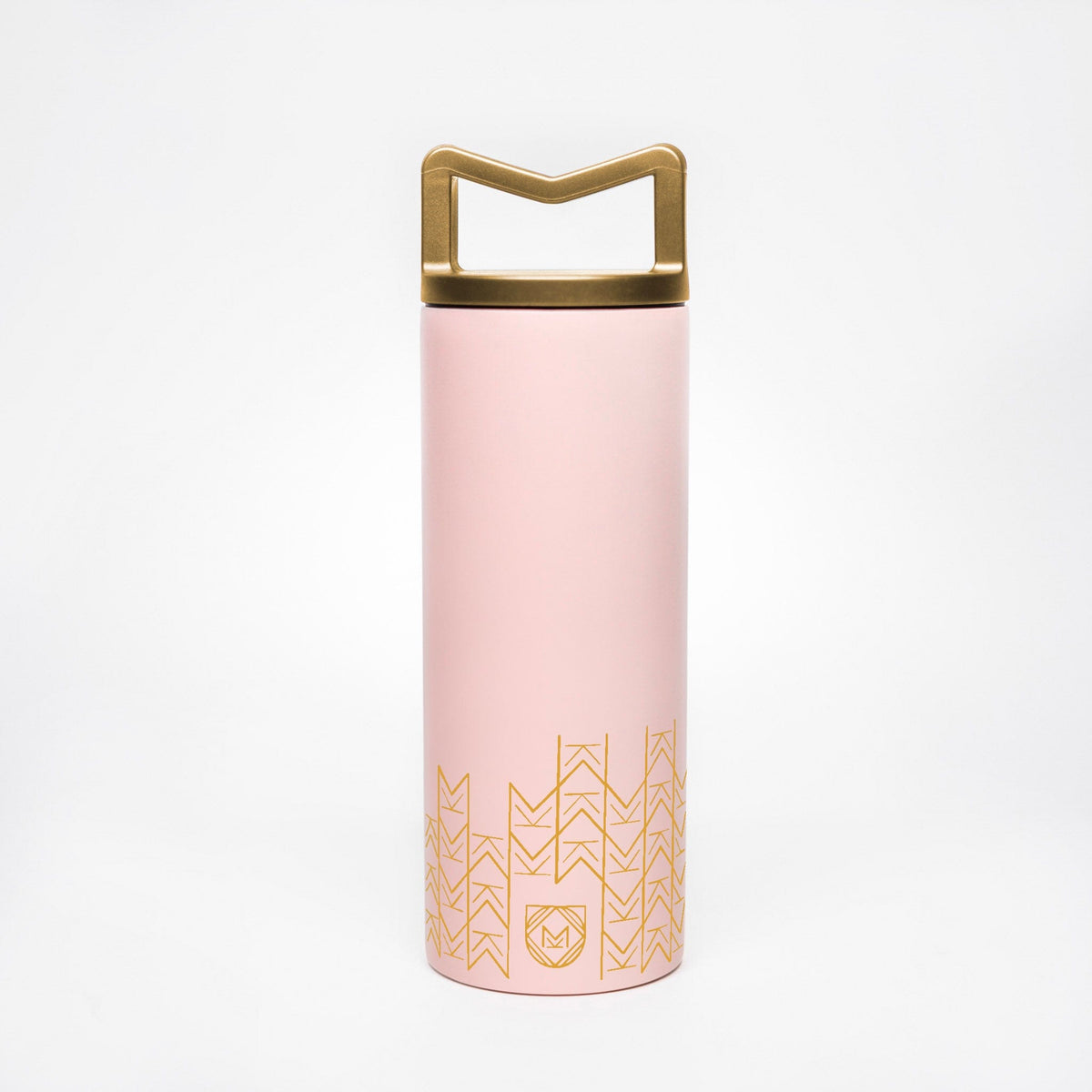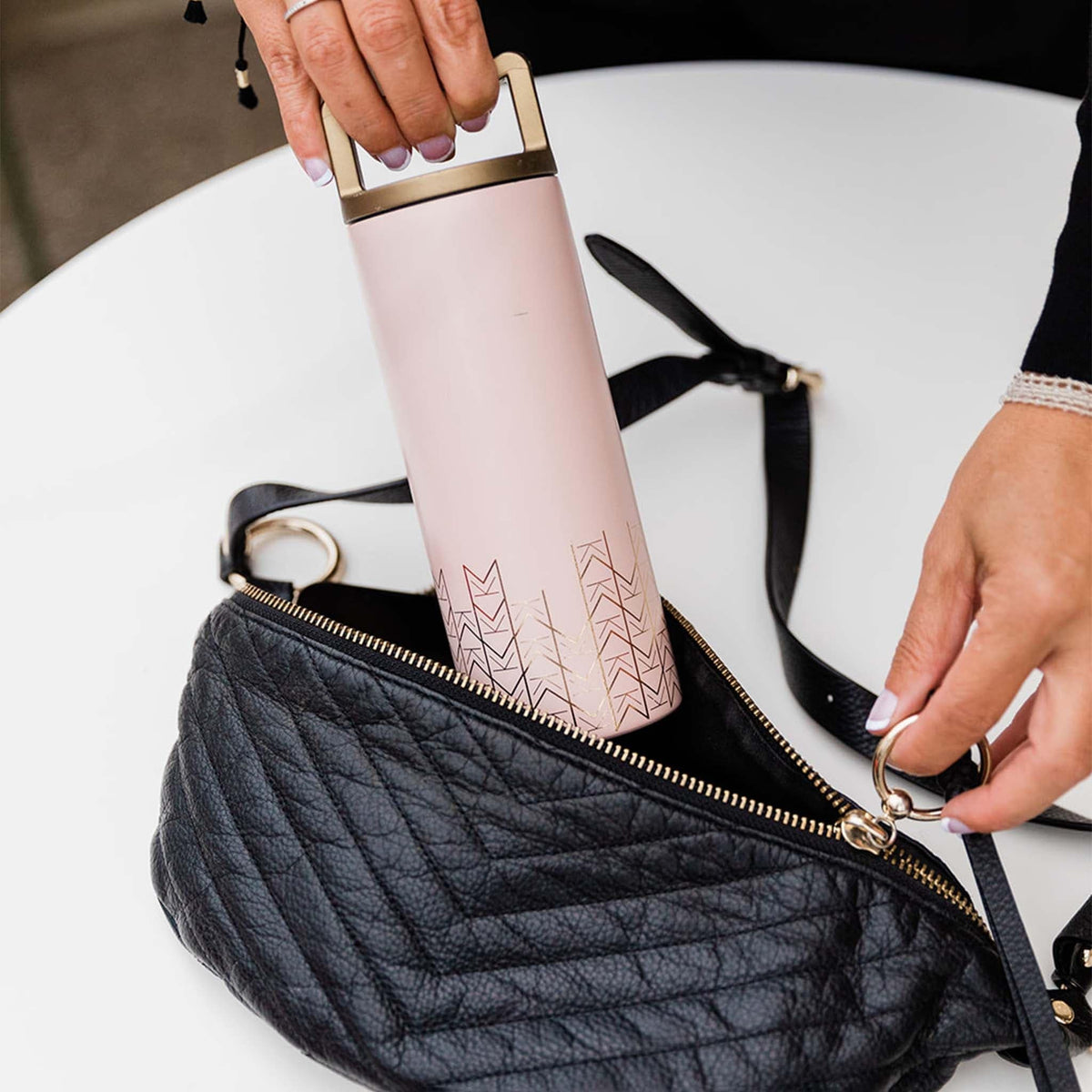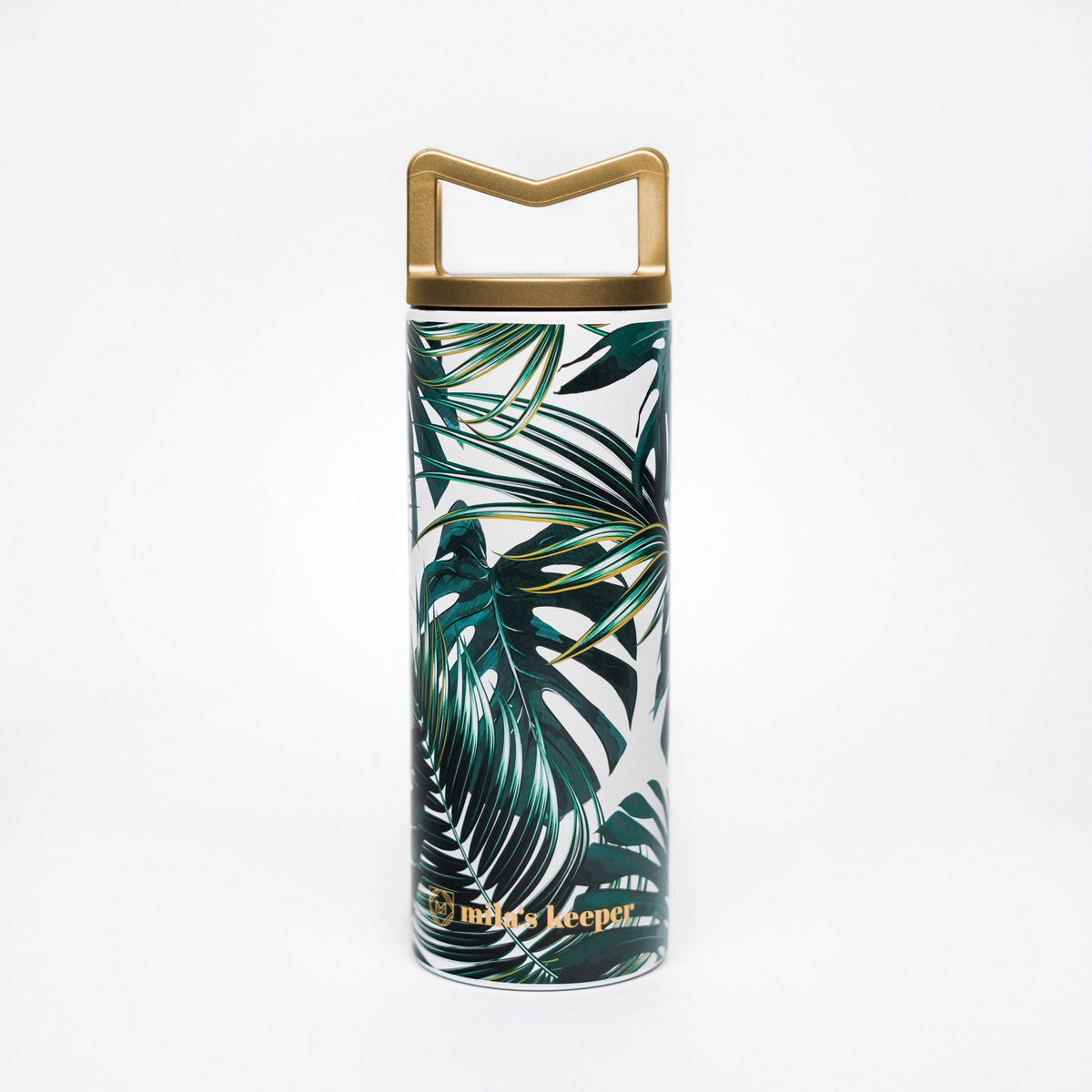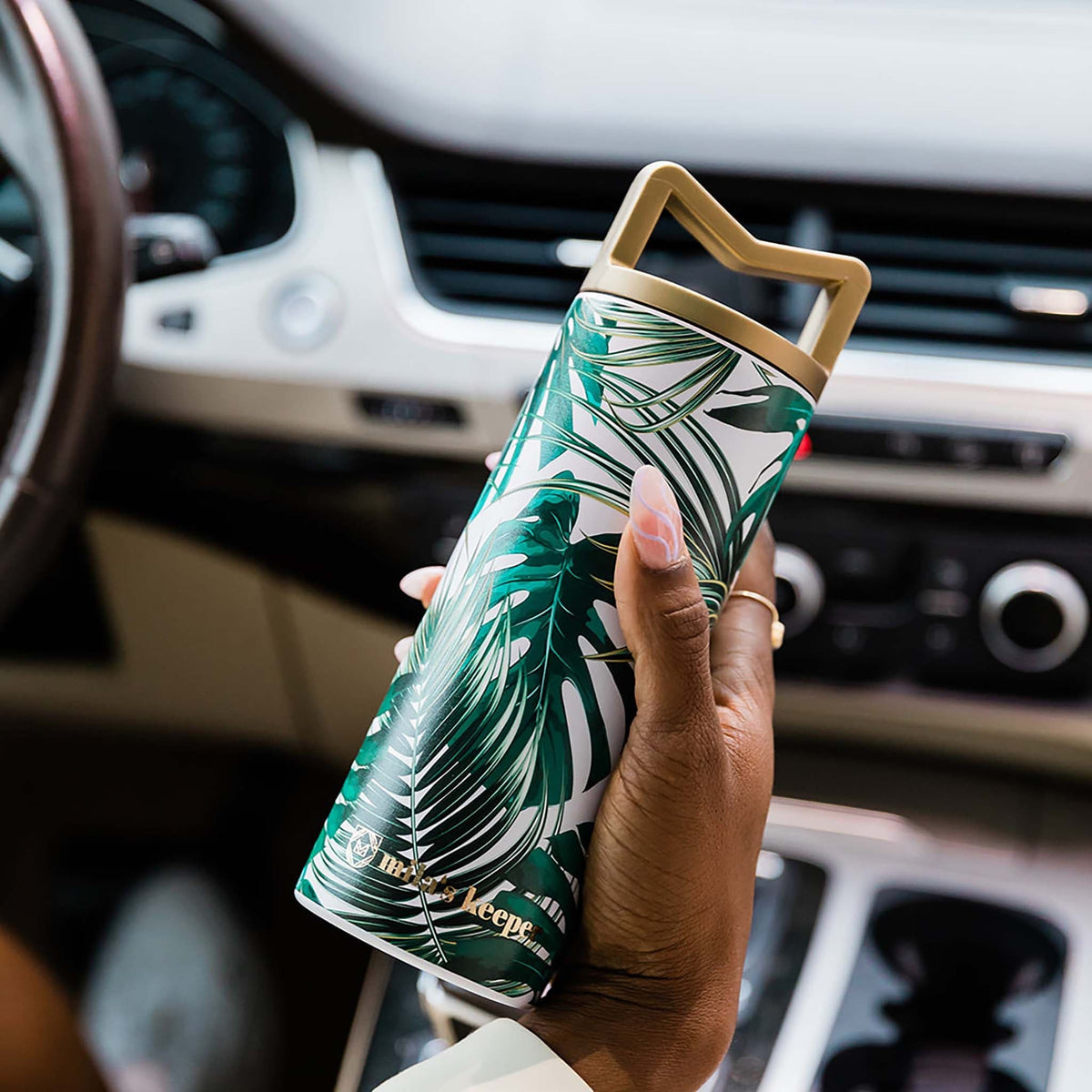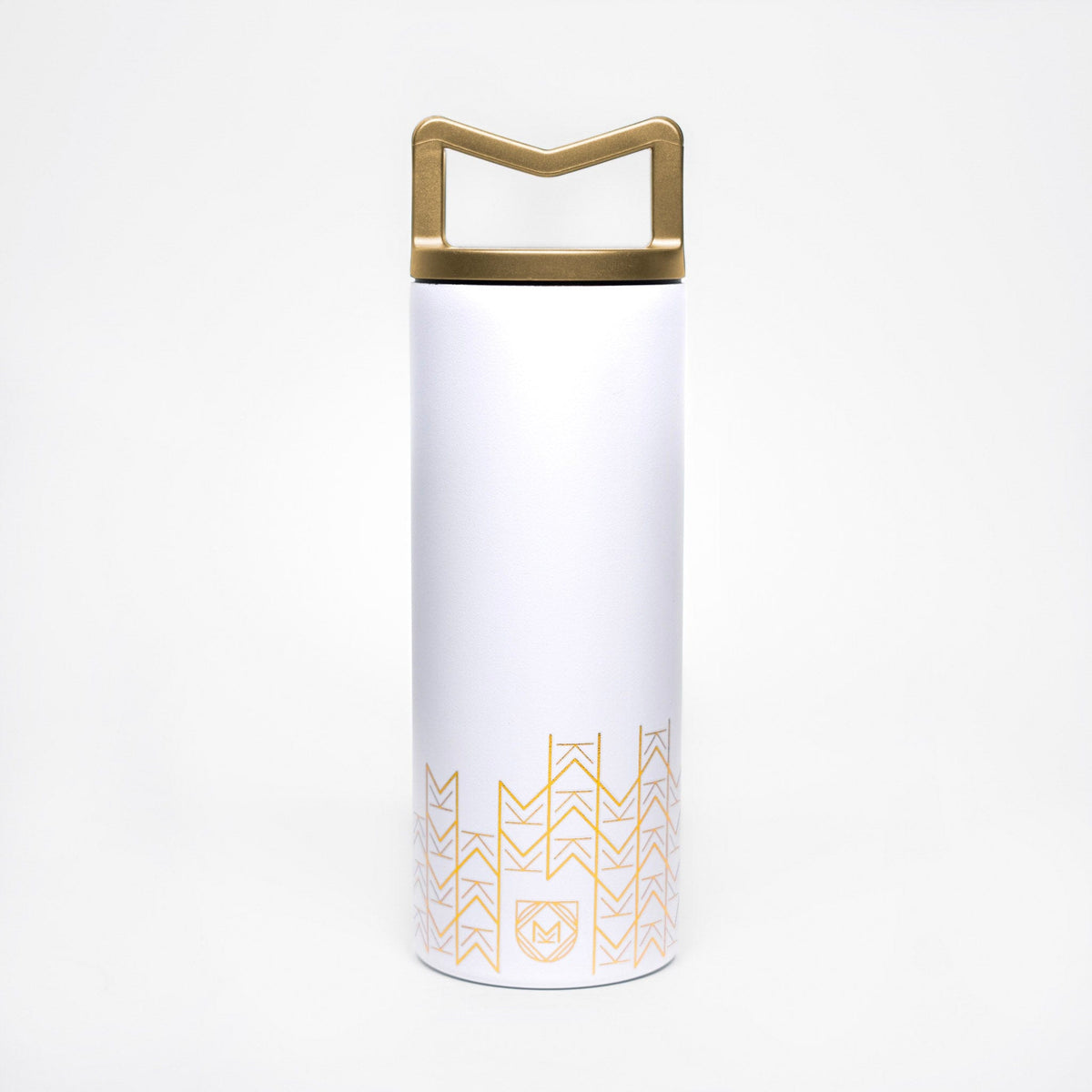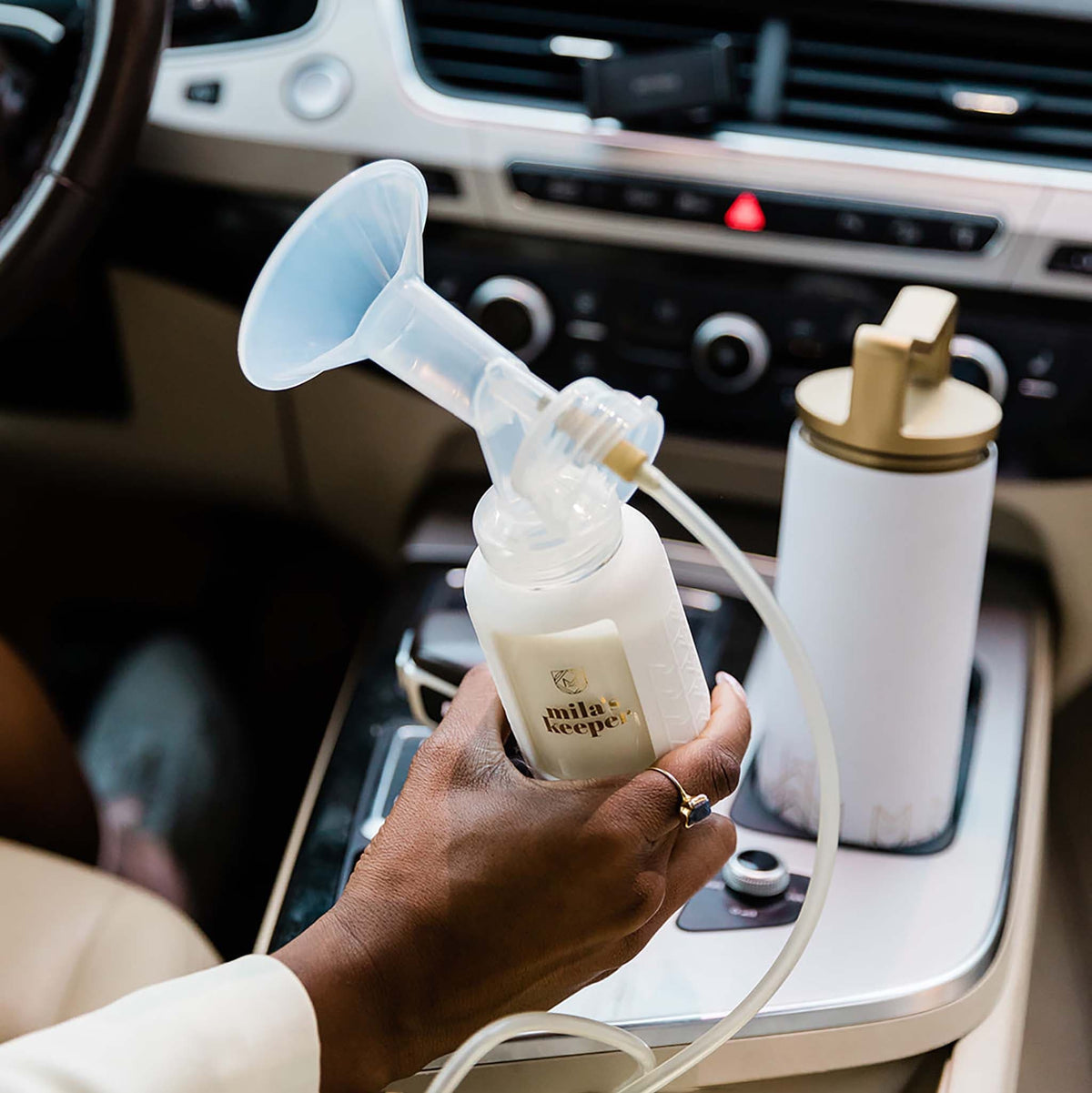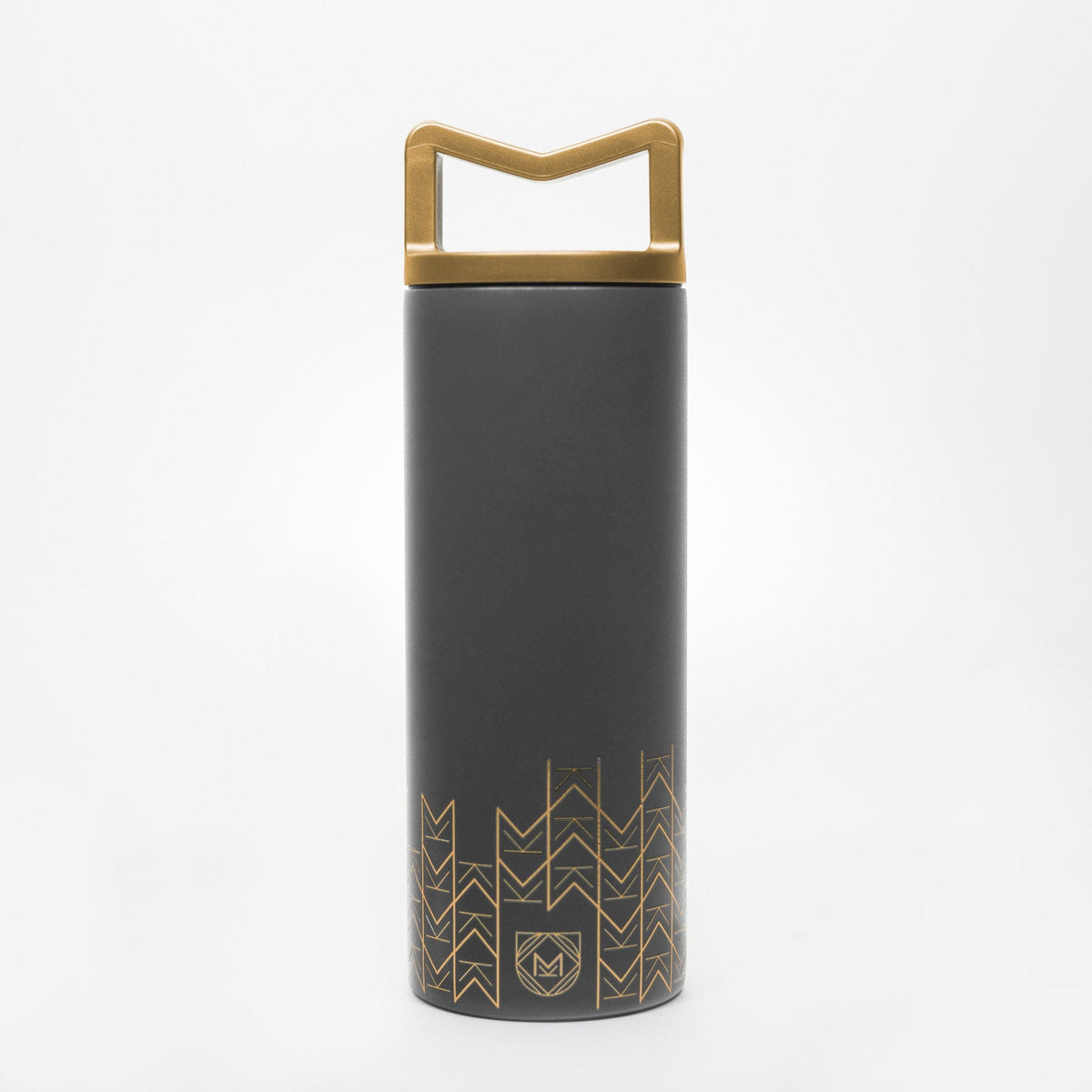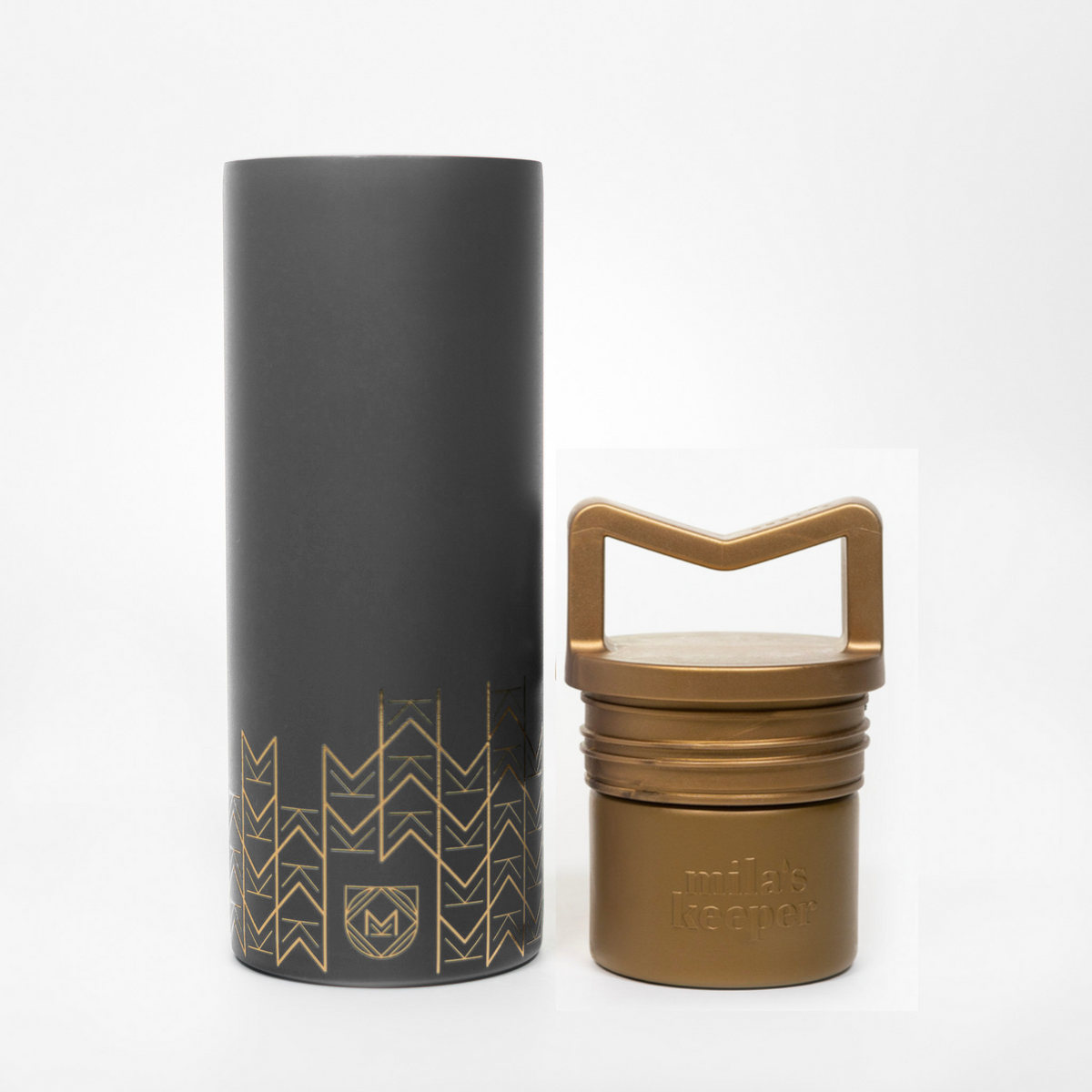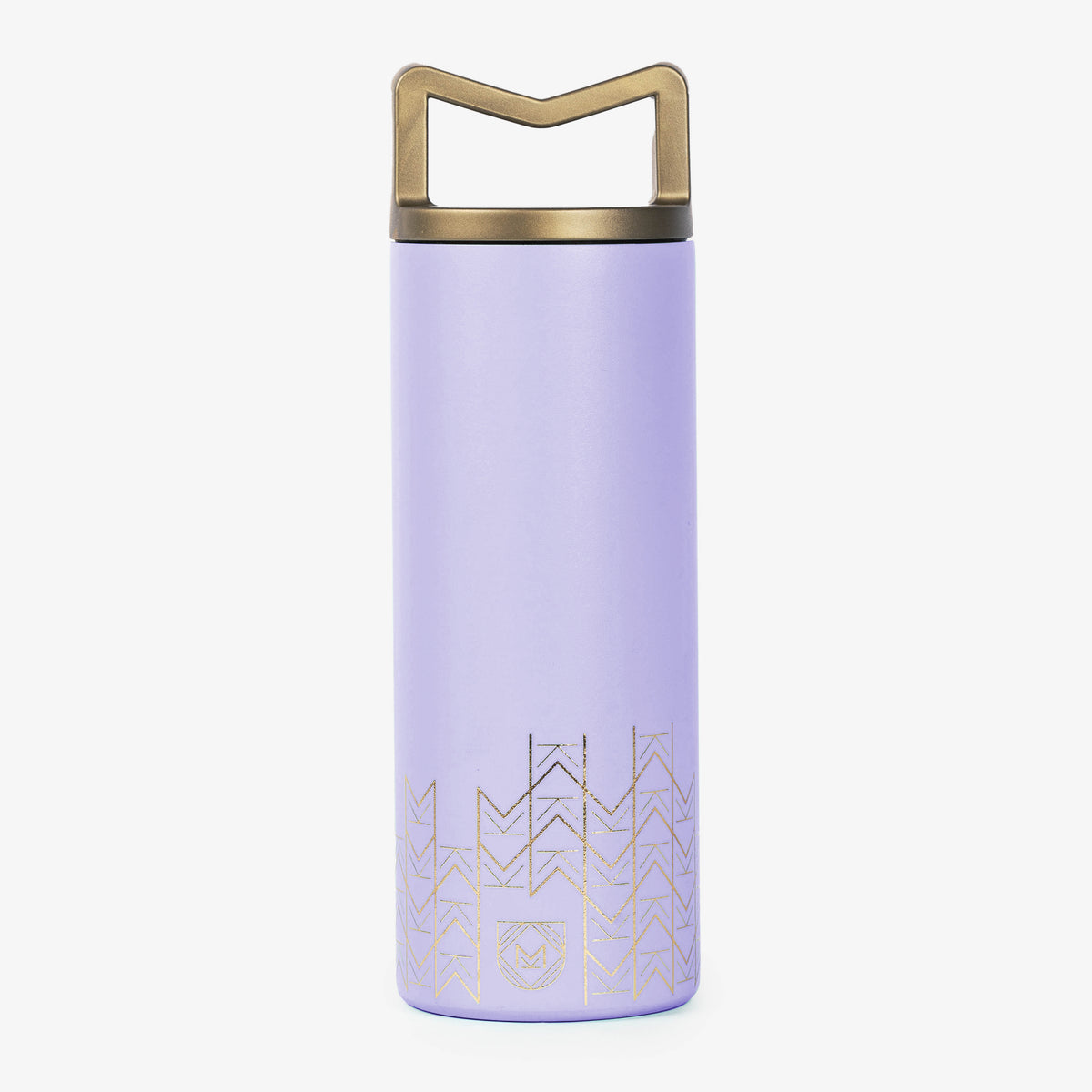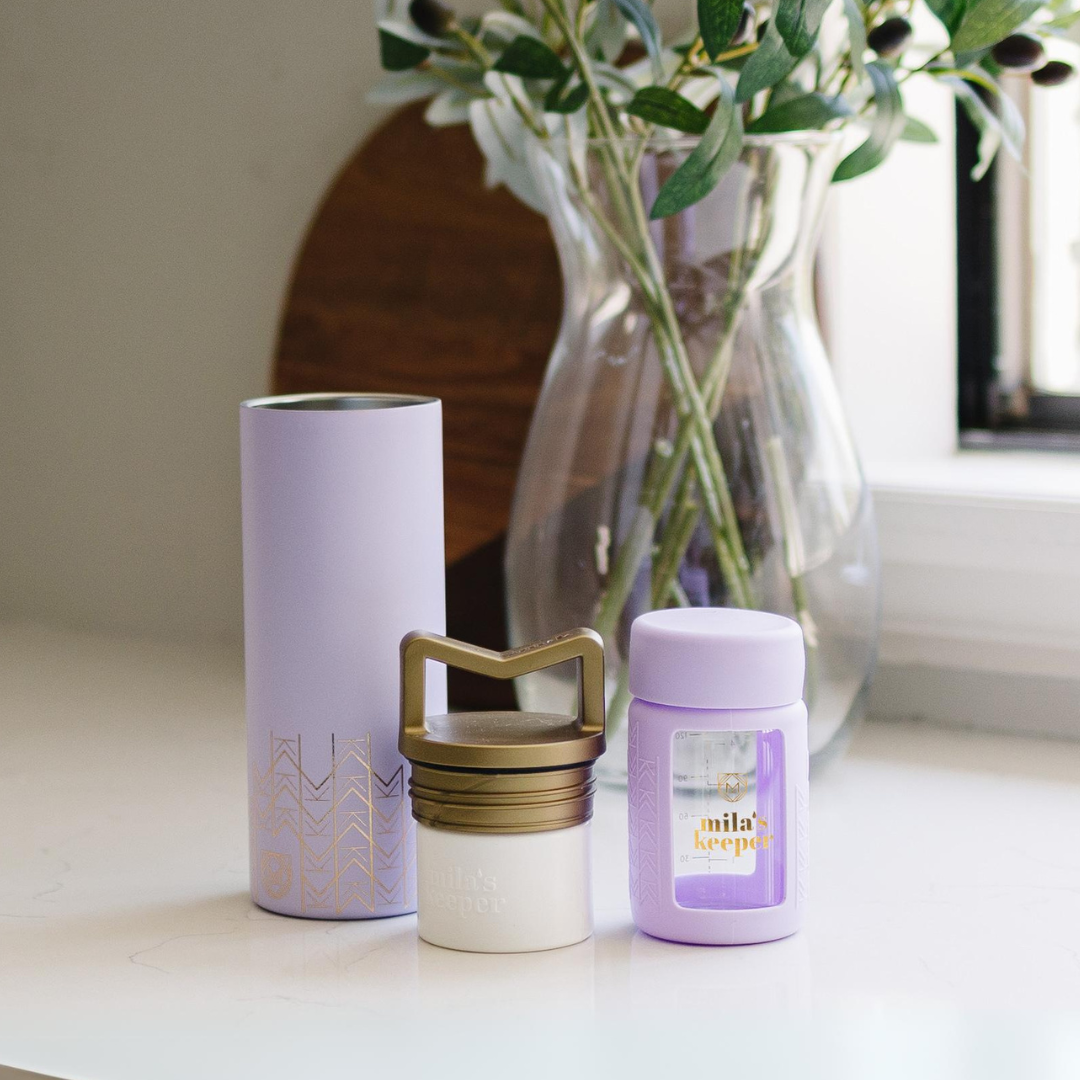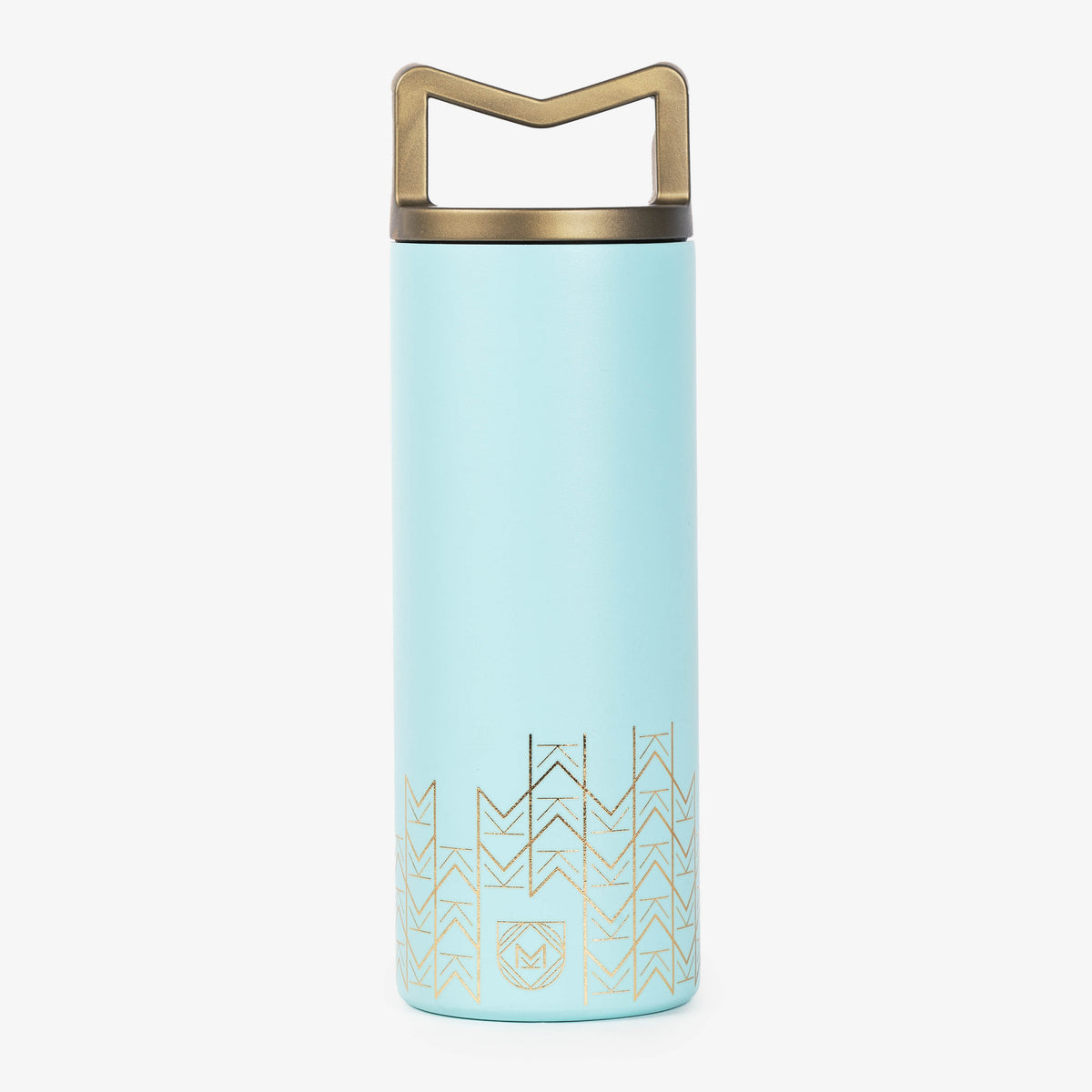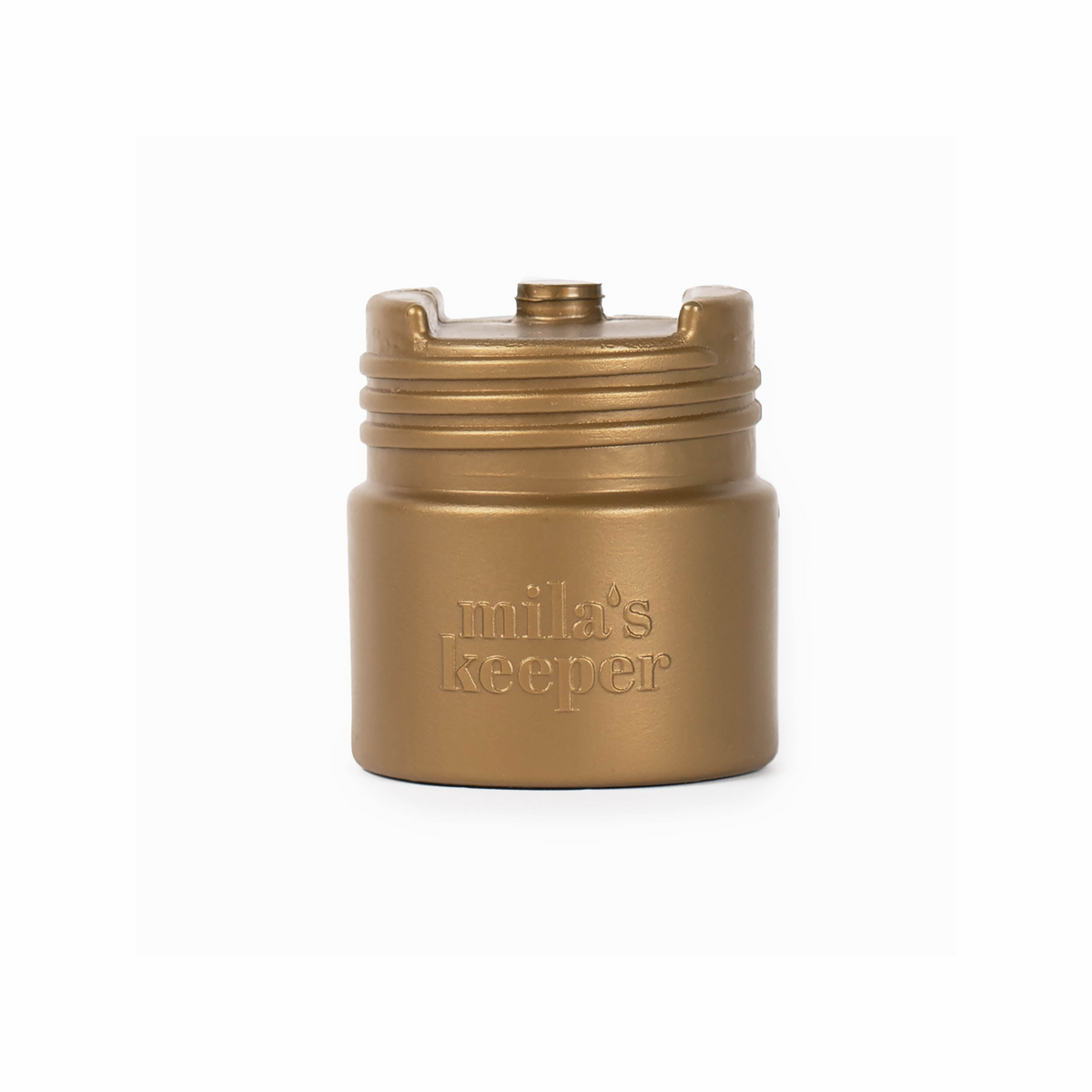Not everyone’s breast milk production is the same, day to day or even week to week. Sometimes you start pumping and can tell immediately that you are going to get a full bottle, and maybe even more! Hopefully, you’ve got an empty one handy to trade it out with. Sometimes even the spare fills up all the way too (wow!) Other times, however, you’re not pumping enough to get anywhere near filling even one bottle up.
Given this inconsistency, your daily stock can be all over the place: full bottles, nearly-empty bottles, and everything in between.
We’ve all looked at this jumbled assortment of bottles, and thought that (maybe) there’s a better way to store them. Especially if you get home in the evening and try to squeeze them into the refrigerator around all the leftovers you still need to throw out. Or as you're rearranging the contents of your fridge and you find a stray bottle full of breast milk and can’t remember when it was pumped (oops!).
One way to manage this variety of expressed breast milk is something called the pitcher method. Maybe you’ve heard of this technique before, or maybe this is new information. Either way, we’re here to break down the pros and cons of the method, and help you figure out if this is something that could benefit you!
What it is and how you do it….
The pitcher method is a strategy that collects pumped breast milk into one large pitcher or jar, typically at the end of the day. Here’s the process. After each pumping session, you allow breast milk to cool and then pour it into a large pitcher that is stored in the refrigerator. At the end of the day, you can pour your collected breast milk from the pitcher into bottles in preparation for the next day’s feedings. Or, the next day you can pour breast milk from the pitcher into bottles for feeding as needed. The leftover breast milk (that doesn’t get poured into the bottles) is then labeled and frozen.
For many mamas, this is an easy method to follow and the answer to chaotic fridge nightmares. To other mamas, this might sound like more steps to complicate their already complicated day.
So let’s get into the pros and cons that are most often brought up when discussing the breast milk pitcher method.
What are the pros of the pitcher method?
It saves space
One of the biggest advantages of using the pitcher method is that it takes up less space in the refrigerator. Since you are pouring breast milk into a pitcher or jar throughout the day, bottles aren’t accumulating in your fridge, leaving you more free space.
This can be really great if you don’t have a large supply of breast milk bottles. Lots of mamas are trying to stay away from plastic and might have just a few quality glass breast milk storage bottles. Once you pour your breast milk into the jar, you can then wash it and it’s ready to use for your next pumping session.
The next day, you can then pour the breast milk from the jar into the bottle that you’ll use for the feeding. After the feeding, you wash it up and have it ready to go for the next feeding or pumping session. You’ll want at least a few bottles in rotation so that if you have one bottle cooling in the fridge, you then have one free to use for feeding.
This is a good technique for the mamas that find it easier to deal with dishes right away instead of letting them pile up, and then having to face the overflowing sink at the end of the day.
For some busy, working mamas this method works nicely too. They transfer pumped milk into a good traveling jar throughout the day, and when it's time to leave they only have one container to carry home.
When looking for a breast milk storage pitcher, a lot of moms prefer to use large mason jars, like the 64 oz ones. Not only do these use less plastic, but also the fat in the breast milk doesn’t stick as much to the sides as it does in the plastic pitchers.
Whichever container you use, you’ll need to use a spatula to scrape down the sides and stir the breast milk together before distributing it into bottles to feed your little one.
This brings us to another appealing aspect of the pitcher method, namely the potential health benefits for your baby.
It balances foremilk and hindmilk
There are suggestions that the pitcher method helps with lactose overload- sometimes called a foremilk/hindmilk imbalance. In fact, there are published studies that substantiate these claims.
Lactose overload occurs when a breastfeeding baby regularly gets more watery, higher-lactose foremilk and less of the creamy hindmilk. Lactose is a sugar in milk that the body needs to break down in order to fully absorb. The fat in the breast milk helps to slow digestion down, keeping it all in balance. If a baby is getting too much foremilk (lactose) without enough hindmilk (fat) this can overwhelm the digestive system, creating an imbalance that causes digestive discomfort in the baby.
While this isn’t a common issue for most mamas, the pitcher method has shown positive results for babies with lactose overload. Because all of the breast milk from a day gets mixed together in a jar, it distributes the foremilk and hindmilk evenly, giving the baby a more balanced bottle of breast milk than they would maybe otherwise receive.
Helps in scraping off of all the good fat!
With the pitcher method, all the good, nutritous fat that normally accummulates on the side of the container can be easily scraped off in a larger pitcher and swirled back into the mix vs the impossible feat of scraping from the inside of a small bottle!
Works well if you have an oversupply
Mamas with a surplus of breast milk seem to prefer the pitcher method because they find it easier to pop the leftover breast milk straight into the freezer after preparing bottles for the next day.
You can also fill the freezer bottles or bags as full as you want, cutting down on waste if you use bags.
We know that when storing breast milk, you should use it up or throw it away after four days. Really though, if you know you won’t be using it within a few days, you should just commit to freezing the milk, as the quicker you freeze it the better. The properties in breast milk that slow the growth of bad bacteria begin to decline after a few days in the fridge, so if you know you have a surplus, it’s better to deal with it sooner rather than later.
What are the cons of the pitcher method?
Extra steps
One important and frequently discussed step of the pitcher method is the need to cool your freshly expressed breast milk before combining it with the breast milk already in the refrigerated pitcher. This is one of the top reasons why some women don’t prefer the method,
For many mamas, this extra step can easily be forgotten. You set your fresh bottle in the refrigerator and get on with your busy day, only to discover it waiting for you when you go to place the next bottle of breast milk you’ve expressed in the fridge to cool!
So why do we need to do this step? Would it make the pitcher method easier if it wasn’t necessary? According to the CDC, “mixing freshly expressed breast milk with already cooled or frozen milk isn’t advised because it can rewarm the older stored milk. It’s best to cool freshly expressed milk before combining it with older, previously cooled or frozen milk.”
If you’re curious as to the reasoning behind this advice, and what’s so dangerous about cold milk rewarming the older milk, so were we. While looking into the science behind this often repeated warning, there didn’t seem to be much current data to back it up.
Apparently, the AAP (American Academy of Pediatrics) unexpectedly changed its guidelines about the storage of breast milk in September of 2021 to include a line about mixing warm breast milk with cold breast milk. At the time, the guidelines stated:
“Mothers should aim for cleanliness but realize milk is a biologic substance and full of probiotic and commensal bacteria. Hand washing, using clean or new containers, minimizing milk transfers (which waste fat and calories) and pumping directly into storage containers are recommended. Plastic or glass containers are fine, no evidence supports one over the other. Mothers can mix warm milk and cold, or even consider pooling milk from 24 hours together, which may help even out variability in nutrients due to pumping time or breast emptying (which influences fat content of the milk).”
That last line of information about being able to mix breast milk of different temperatures is now no longer listed on the AAP website. It seems to have disappeared with as much mystery as it appeared.
Plenty of mamas admit that while doing the pumping pitcher method, they pour freshly expressed breast milk into the pitcher of cold breast milk without cooling it down first.
At Mila's Keeper we personally heed to the CDC recommendations of not combining warm milk to cold milk, if at all possible. Sometimes it is not possible though, so we also believe in weighing the risks over the benefits in some circumstances.
If you want to try the pitcher method, but worry that the cooling step will be too much, it would be worth it to discuss with your pediatrician or lactation consultant to get their thoughts on mixing breast milk at different temperatures.
The timing matters
Another drawback to the pitcher method is that some studies show that the composition of breast milk changes throughout the day and that milk produced at night has higher levels of melatonin and other sleep-inducing ingredients. Vice versa for the morning milk. The milk produced in the morning tends to have higher levels of the stress hormone cortisol, which helps make us feel alert. Pretty incredible, right?
It’s thought that breastfeeding can result in an earlier establishment of the circadian rhythm due to melatonin passing through to babies from their mother’s breast milk. Indeed, studies have shown that breastfed babies have more regular circadian rest-activity rhythm and better sleep parameters than their mixed breast/bottle-fed infants.
So for mamas that are exclusively pumping, some have been advised to not only date their bottles but to also keep track of the time of day that they expressed it. That way, they can give their babies bottles that correspond with the time of day they pumped. Thus, ensuring the babies are getting breast milk with higher levels of melatonin at night and breast milk with higher levels of cortisol during the day.
If you want to try the pitcher method but are nervous about disrupting the balance of melatonin, you might try pumping during the day while breastfeeding at night, if you’re able to. That way your baby would still be receiving that extra bit of melatonin when needed, because who wants to miss out on that extra sleep?
It’s a personal choice
All in all, the topic of breast milk is incredibly under-researched. Like with a lot of other things, mamas have to dig around for the answers to questions they have and will often have to rely on their gut instincts to know what is best for their child.
The good news is that we’re here to help you navigate all of this and there’s a lot of support out there from other mamas too! No matter your opinion on technology, one thing we can’t deny is that it helps to connect with people near and far and you can almost always find someone who has the same questions you have, or who is going through a similar situation.
We created our patented, MilKeeper®- an insulated breast milk cooler that keeps milk safe for 20 hours, to support you in all the ways of storage you're most comfortable. So you can fit your pump bottles or pump bags directly into our cooler, or you can pour milk directly in and combine cooled milk.
When it comes to the pitcher method, it’s something that’s discussed in earnest in breastfeeding groups. Other mamas are sharing their experiences and what their lactation consultants or pediatricians have told them. They offer tips, tweaks, and variations to the pitcher method that you might find useful.
Keep Reading related blog: How Long Does Breast Milk Last After Warming
--
A female-designed and female-run company, Mila's Keeper is on a mission to empower women to thrive during their breastfeeding journey by offering reusable, eco-friendly breast milk storage solutions for their day-to-day needs. Get the latest tips and info on Mila's Keeper products by following us on Facebook, Twitter, Instagram, Pinterest, and LinkedIn.

